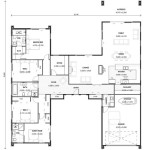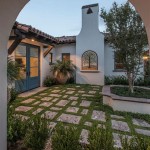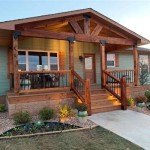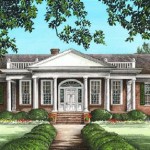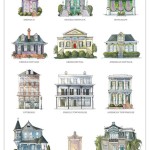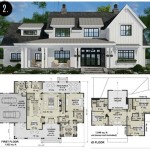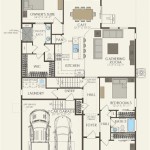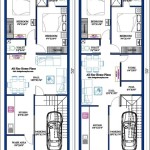Home Plans For Narrow Lots On Lakes: Maximizing Space and Views
Building a home on a narrow lot presents unique design challenges, particularly when the lot is also situated on a lake. Integrating both spatial efficiency and the desire to maximize lakefront views requires careful planning and innovative architectural solutions. Successfully navigating these constraints results in a residence that is both functional and aesthetically pleasing, capitalizing on the natural beauty of the surroundings.
This article will explore the key considerations and architectural strategies involved in designing home plans for narrow lots on lakes. It will address maximizing space, optimizing lake views, adhering to local regulations, and ensuring structural integrity, all while creating a comfortable and desirable living environment.
### Understanding the Challenges of Narrow Lakefront LotsNarrow lakefront lots present a multifaceted set of challenges that require careful consideration during the design phase. The limited width of the lot directly restricts the floor plan layout and the potential size of rooms. Restrictions regarding setback requirements from the lake's edge further compound this issue, diminishing the usable building area. The proximity to water also necessitates adherence to stricter building codes designed to prevent erosion, protect water quality, and ensure structural stability against potential flooding and wave action.
Furthermore, narrow lots often limit the ability to achieve ideal solar orientation, potentially impacting energy efficiency and natural lighting. Navigating these challenges requires ingenuity and a strategic approach to design, considering both the functional needs of the residents and the environmental context of the lake setting.
### Key Design Strategies for Narrow Lakefront HomesSeveral design strategies are particularly effective in addressing the spatial limitations of narrow lakefront lots. Vertical expansion, strategic window placement, open floor plans, and the integration of outdoor living spaces are crucial components of a successful design.
Vertical Expansion: One of the most common strategies is to build upwards. Multi-story homes utilize the available height to compensate for the limited width, maximizing the usable floor area without encroaching on setback requirements. This approach allows for the creation of distinct living zones, such as bedrooms on upper floors with expansive lake views and living spaces on the main floor. However, vertical expansion needs careful consideration of staircase placement to avoid wasting valuable floor space.
Strategic Window Placement: Windows are essential for bringing natural light into narrow homes and for capitalizing on lake views. Tall, narrow windows, strategically positioned along the length of the house, can maximize light penetration without compromising privacy. Large windows facing the lakefront, particularly on upper floors, capture panoramic views and create a visual connection to the water. Consider using energy-efficient windows to minimize heat gain and loss, maintaining a comfortable indoor temperature year-round.
Open Floor Plans: Open floor plans create a sense of spaciousness in narrow homes by eliminating interior walls and allowing for a continuous flow between living areas. Combining the kitchen, dining, and living room into a single, unified space maximizes usable area and facilitates social interaction. Strategically placed furniture and subtle changes in flooring or ceiling height can define distinct zones within the open plan without the need for physical barriers.
Integration of Outdoor Living Spaces: Extending the living space outdoors is another effective way to enhance the functionality and enjoyment of a narrow lakefront home. Decks, patios, and balconies can provide additional areas for relaxation, dining, and entertaining, blurring the boundaries between indoor and outdoor living. Consider incorporating covered outdoor spaces, such as screened porches or pergolas, to provide shade and protection from the elements. These outdoor areas can be designed to take full advantage of lake views, creating a seamless connection to the surrounding landscape.
### Maximizing Lake Views and Natural LightCapturing optimal lake views and maximizing natural light penetration are paramount considerations when designing for narrow lakefront lots. Careful planning of window placement, orientation of living spaces, and the use of reflective surfaces can significantly enhance the visual appeal and functionality of the home.
Window Placement and Orientation: Strategically positioned windows are essential for framing lake views and bringing natural light into the interior. Expansive windows facing the lakefront provide unobstructed vistas and create a strong visual connection to the water. Consider using a combination of window sizes and shapes to maximize light penetration and create visual interest. For instance, clerestory windows placed high on walls can bring natural light into interior spaces without compromising privacy.
Living Space Arrangement: Arrange the primary living spaces, such as the living room, dining room, and master bedroom, to face the lakefront whenever possible. This will allow residents to enjoy panoramic views from the most frequently used areas of the home. Orienting these spaces towards the south or east can maximize exposure to morning sunlight, creating a bright and cheerful living environment. Consider the placement of furniture and décor to avoid obstructing views and to further enhance the connection to the lake.
Reflective Surfaces: Utilizing reflective surfaces, such as mirrors, light-colored walls, and polished floors, can amplify natural light and create a sense of spaciousness in narrow homes. Mirrors strategically placed opposite windows can reflect light deeper into the interior, illuminating dark corners and creating the illusion of a larger space. Light-colored walls and ceilings reflect light more effectively than dark colors, contributing to a brighter and more airy atmosphere. Polished floors can also reflect light, adding to the overall brightness of the interior.
In addition to these strategies, consider incorporating skylights or roof windows to bring natural light into interior spaces that may not have access to exterior windows. These features can be particularly effective in hallways, bathrooms, and kitchens, where natural light is often limited.
### Structural Considerations and Building CodesBuilding on a lakefront property presents unique structural challenges and necessitates strict adherence to local building codes. These codes are designed to protect water quality, prevent erosion, and ensure the structural integrity of the building against potential flooding and wave action. It is essential to consult with local authorities and qualified engineers to ensure that the design complies with all applicable regulations.
Foundation Design: The foundation is a critical element of any lakefront home, providing stability and protecting against water damage. Depending on the soil conditions and the proximity to the water, different foundation types may be appropriate. Common options include concrete slabs, crawl spaces, and pier and beam foundations. Concrete slabs provide a solid and stable base, but they are susceptible to flooding in low-lying areas. Crawl spaces elevate the building above ground level, reducing the risk of flooding and improving ventilation. Pier and beam foundations are particularly well-suited for properties with unstable soil conditions, as they distribute the weight of the building over a larger area.
Erosion Control: Protecting the shoreline from erosion is a crucial consideration when building on a lakefront property. Erosion can damage the foundation of the home and negatively impact water quality. Several erosion control measures can be implemented, including retaining walls, riprap, and vegetation planting. Retaining walls provide a physical barrier against erosion, while riprap, which consists of large stones or rocks, helps to dissipate wave energy. Planting native vegetation along the shoreline can also help to stabilize the soil and prevent erosion. Consult with a qualified engineer or landscape architect to determine the most appropriate erosion control measures for the specific site conditions.
Flood Protection: Homes built in flood zones are subject to specific building codes designed to minimize flood damage. These codes may require elevating the building above the base flood elevation, using flood-resistant materials, and installing flood vents in the foundation. Elevating the building reduces the risk of water damage to the interior, while flood-resistant materials can withstand prolonged exposure to water without deteriorating. Flood vents allow water to flow through the foundation, reducing hydrostatic pressure and preventing structural damage. Consult with a local building official to determine the specific flood protection requirements for the property.
Material Selection: Selecting durable and weather-resistant materials is essential for lakefront homes. Materials that are resistant to moisture, rot, and insect infestation are particularly important. Common choices include treated lumber, composite decking, and fiber cement siding. Treated lumber is resistant to rot and insect damage, making it a good choice for framing and decking. Composite decking is a durable and low-maintenance alternative to wood decking. Fiber cement siding is resistant to moisture, rot, and fire, making it a good choice for exterior cladding.
Navigating the complexities of building codes and structural considerations requires the expertise of qualified professionals. Engaging with architects, engineers, and contractors who have experience with lakefront construction is crucial to ensuring a successful and compliant project.
### Interior Design Considerations for Narrow SpacesThe interior design of a narrow lakefront home should complement the architectural design by maximizing space, enhancing natural light, and creating a cohesive and inviting atmosphere. Strategic use of color, furniture, and storage solutions can significantly impact the perceived size and functionality of the living spaces.
Color Palette: Utilizing a light and neutral color palette can visually expand the space. Light colors reflect more light, making the room feel brighter and more airy. Consider using shades of white, beige, gray, and light blue for walls, ceilings, and flooring. Accent colors can be incorporated through furniture, artwork, and accessories to add visual interest without overwhelming the space.
Furniture Selection: Choose furniture that is appropriately sized for the space. Overly large furniture can make a narrow room feel cramped and cluttered. Opt for smaller-scale pieces with clean lines and minimalist designs. Multifunctional furniture, such as sofa beds and storage ottomans, can help to maximize space and provide additional storage options. Avoid bulky upholstered furniture and opt for pieces with exposed legs to create a sense of openness.
Storage Solutions: Incorporate creative storage solutions to minimize clutter and maximize usable space. Built-in shelving, cabinets, and drawers can provide ample storage without taking up valuable floor space. Utilize vertical space by installing shelves or cabinets that extend to the ceiling. Consider using under-bed storage containers and wall-mounted organizers to keep items out of sight. Keeping the living spaces organized and clutter-free will enhance the sense of spaciousness.
Lighting Design: Layered lighting is essential for creating a warm and inviting atmosphere in narrow homes. Combine ambient lighting, task lighting, and accent lighting to provide adequate illumination for various activities. Ambient lighting provides overall illumination to the room, while task lighting focuses on specific areas, such as reading nooks or kitchen countertops. Accent lighting highlights architectural features or artwork, adding visual interest to the space. Utilize a combination of recessed lighting, pendant lights, floor lamps, and table lamps to create a well-lit and balanced interior.
By carefully considering these interior design principles, it is possible to create a comfortable, functional, and aesthetically pleasing living environment within the constraints of a narrow lakefront lot.

Open Concept Small Lake House Plans Houseplans Blog Com

Small Cosy Homes Narrow Lot House Plans Mediterranean Style Lake

Narrow Lot Lake House An Ideabook By Bcfry

House Plan Of The Week Narrow Lot Beach Home Designers

House Plans For Narrow Lots On Waterfront Lake Small Houses Lot

Narrow Lot Lake House Floor Plans

Luxe Lake House Plans From Visbeen Architects Houseplans Blog Com

Small Cabin Floor Plan 3 Bedroom By Max Fulbright Designs

Craftsman House Plan Narrow Lot Bungalow Style Floor Lake Plans

Narrow Lot House Plans Coastal From Home

